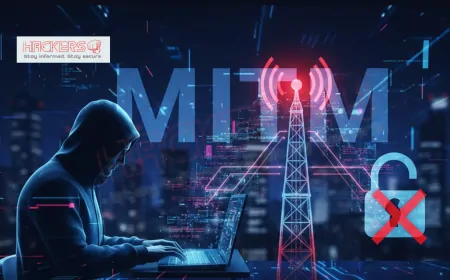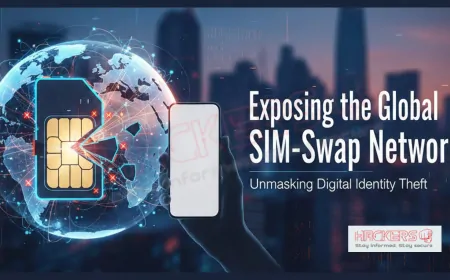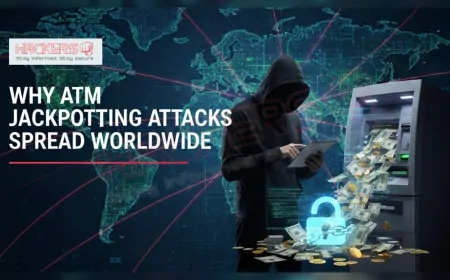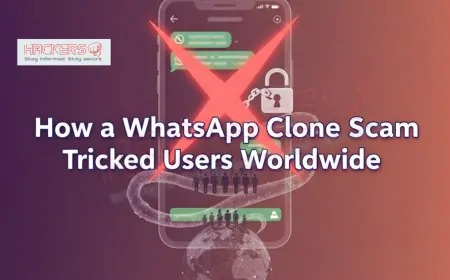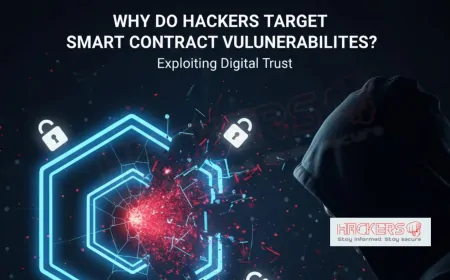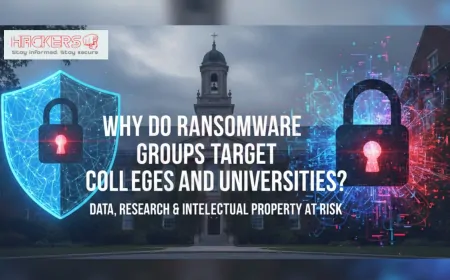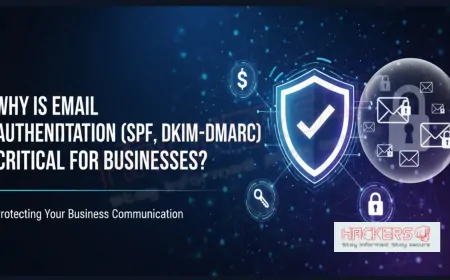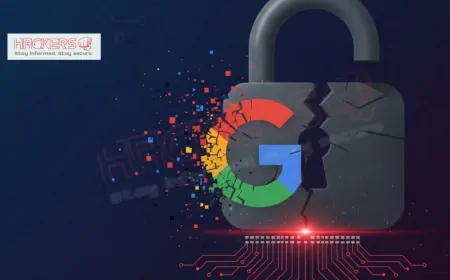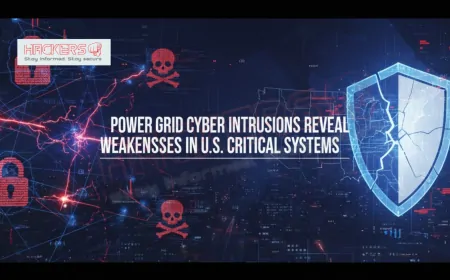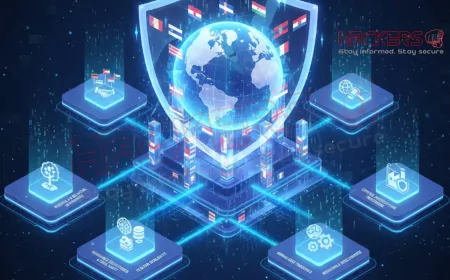What Are the Most Dangerous Phishing Scams to Watch Out for in 2025?
Picture this: you're scrolling through your emails on a busy morning, and one pops up from your bank warning about suspicious activity on your account. It urges you to click a link to verify your details right away. Sounds familiar? In 2025, scenarios like this are more common and cunning than ever, thanks to advances in technology like artificial intelligence. Phishing scams, where fraudsters trick you into giving away sensitive information, cost businesses and individuals billions each year. According to recent reports, global cybercrime damages are expected to reach $10.5 trillion annually. For everyday people, these attacks can lead to stolen identities, drained bank accounts, or worse. But don't worry: knowledge is your best defense. In this blog, we'll dive into the most dangerous phishing scams lurking in 2025, explain how they work in simple terms, and share practical tips to stay safe. Whether you're a tech novice or just want to brush up, this guide will help you spot and avoid these digital traps.

Table of Contents
- What Is Phishing?
- AI-Powered Phishing
- Voice Phishing (Vishing)
- SMS Phishing (Smishing)
- QR Code Phishing (Quishing)
- Spear Phishing and Whaling
- Business Email Compromise (BEC)
- Romance Scams with AI
- Cryptocurrency and Investment Scams
- Imposter Scams
- Sextortion Scams
- Online Shopping and Fake Website Scams
- Job and Employment Scams
- Summary of Top Phishing Scams
- General Tips to Protect Yourself
- Conclusion
- Frequently Asked Questions
What Is Phishing?
Before we jump into the specifics, let's cover the basics. Phishing is a type of cyber attack where scammers try to fool you into revealing personal information, like passwords, credit card numbers, or social security details. They do this by pretending to be someone trustworthy, such as a bank, a government agency, or even a friend. These attacks usually come through email, but they can also arrive via text messages, phone calls, or social media.
In 2025, phishing has become more sophisticated due to tools like AI, which help create realistic messages. Over 200 phishing statistics show that attacks are rising, with more than 200,000 reported in just one year. The goal is simple: get you to click a bad link, open a harmful attachment, or share sensitive info. Once they have that, they can steal your identity or money. Understanding this foundation helps in recognizing the variations we'll discuss next.
AI-Powered Phishing
One of the scariest developments in 2025 is the use of artificial intelligence in phishing. AI helps scammers create highly personalized messages that look and sound real. For example, they can generate emails that mimic your bank's style perfectly, complete with your name and recent transaction details.
How it works: Scammers use AI tools to analyze data from social media or past breaches. They craft emails or texts that seem urgent, like a warning about a fraudulent charge. Clicking the link leads to a fake site where you enter your login info, which they steal.
Signs to watch for: Messages that know too much about you, but from unfamiliar senders. Grammatical errors are less common now, thanks to AI, so check the sender's email address closely. It might be something like [email protected] instead of the real one.
Prevention: Always go directly to the official website instead of clicking links. Use antivirus software that detects AI-generated threats. If in doubt, call the company using a number from their official site. This scam is dangerous because it's hard to spot, leading to massive data theft.
Real-world impact: In 2025, AI phishing has led to losses in the millions, with deepfake videos adding another layer where scammers impersonate executives in video calls to trick employees into transferring funds.
Voice Phishing (Vishing)
Vishing, or voice phishing, involves scammers calling you and pretending to be from a legitimate organization. In 2025, this has surged, with reports of a 79 percent increase in some areas.
How it works: The caller might say they're from your bank or the IRS, claiming there's an issue with your account. They ask for verification details like your PIN or social security number. AI voice cloning makes it sound like a real person you know.
Signs to watch for: Calls from unknown numbers urging immediate action. They might threaten legal action or account closure to create panic.
Prevention: Hang up and call back using a trusted number. Never share sensitive info over the phone. Use call-blocking apps to filter suspicious calls. Vishing is particularly dangerous for seniors, who might be less familiar with these tactics.
Examples: Scammers impersonating embassies or banks have tricked people into sending money for fake emergencies.
SMS Phishing (Smishing)
Smishing uses text messages to deliver phishing attempts. With everyone glued to their phones, this scam is booming in 2025.
How it works: You get a text claiming to be from a delivery service or bank, with a link to track a package or confirm a payment. Clicking installs malware or leads to a fake login page.
Signs to watch for: Texts from unknown numbers with urgent requests. Links that don't match the company's domain.
Prevention: Delete suspicious texts. Verify through official apps or websites. Enable spam filters on your phone. This scam is sneaky because texts feel more personal and immediate.
Stats: Smishing accounts for a growing portion of phishing, with links leading to malware in 94 percent of cases.
QR Code Phishing (Quishing)
Quishing involves fake QR codes that lead to malicious sites when scanned. This trend has seen a 25 percent year-over-year increase.
How it works: Scammers place stickers over real QR codes in public places, like parking meters or menus. Scanning takes you to a site that steals your data or charges your card.
Signs to watch for: QR codes in odd places or covering originals. Unexpected prompts after scanning.
Prevention: Use your phone's camera to preview the URL before visiting. Avoid scanning unknown codes. Quishing is dangerous in public settings where you're distracted.
Spear Phishing and Whaling
Spear phishing targets specific individuals with personalized info, while whaling goes after high-level executives. These are advanced and costly.
How it works: Using data from social media, scammers craft emails that seem from colleagues, requesting wire transfers or data.
Signs to watch for: Emails with personal details but odd requests. Unusual urgency.
Prevention: Verify requests via phone or in person. Train employees on these tactics. Losses from whaling can reach millions per incident.
Business Email Compromise (BEC)
BEC scams impersonate executives to trick employees into sending money or data. It's a top threat in 2025, affecting 64 percent of businesses.
How it works: Fake emails request urgent transfers, often spoofing the CEO's address.
Signs to watch for: Changes in email tone or unusual instructions.
Prevention: Use approval processes for large transactions. Confirm via separate channels.
Romance Scams with AI
Romance scams build fake relationships online, enhanced by AI in 2025 for realistic profiles and chats.
How it works: After gaining trust, scammers ask for money for emergencies or investments.
Signs to watch for: Quick declarations of love, avoidance of meetings, money requests.
Prevention: Video call to verify. Never send money to online strangers. These scams exploit emotions, leading to significant losses.
Cryptocurrency and Investment Scams
With crypto's rise, phishing targets digital wallets through fake giveaways or investments.
How it works: Promises high returns, but requires upfront fees or wallet access.
Signs to watch for: Too-good-to-be-true offers, pressure to act fast.
Prevention: Research thoroughly. Use secure wallets with MFA. Over $2.4 billion lost in 2025.
Imposter Scams
Imposters pretend to be officials or companies, demanding payment for fake issues.
How it works: Calls or emails claim you owe taxes or fines, threatening action.
Signs to watch for: Demands for immediate payment via gift cards or wire.
Prevention: Verify with official contacts. Government agencies don't demand instant payment.
Sextortion Scams
Sextortion tricks people, often teens, into sharing explicit content, then extorts money.
How it works: Fake profiles build trust, then threaten to share images.
Signs to watch for: Pressure for intimate photos, threats after sharing.
Prevention: Don't share explicit content online. Report to authorities immediately.
Online Shopping and Fake Website Scams
Fake sites mimic real ones to steal payment info during purchases.
How it works: Ads lead to discounted deals; you pay, but get nothing.
Signs to watch for: Unrealistic prices, poor site design.
Prevention: Shop on known sites. Check reviews and URLs.
Job and Employment Scams
Fake job offers collect personal info or demand fees for "training."
How it works: Interviews lead to requests for SSN or upfront payments.
Signs to watch for: Jobs requiring payment, unsolicited offers.
Prevention: Apply through official sites. Never pay for job opportunities.
Summary of Top Phishing Scams
To make it easier, here's a table summarizing some of the top scams, their risk levels, and common targets:
| Scam Type | Risk Level | Common Targets | Key Sign |
|---|---|---|---|
| AI-Powered Phishing | High | Everyone | Personalized urgency |
| Vishing | High | Seniors, businesses | Urgent calls |
| Smishing | Medium | Mobile users | Text links |
| Quishing | Medium | Public scanners | Fake QR |
| BEC | High | Businesses | Executive spoof |
| Romance Scams | High | Online daters | Money requests |
General Tips to Protect Yourself
Beyond specific scams, here are some overall strategies: Use strong, unique passwords with a manager. Enable two-factor authentication everywhere. Keep software updated. Educate yourself and family. Report scams to authorities.
Conclusion
In 2025, phishing scams are more advanced and widespread, leveraging AI and other tech to deceive. From AI-powered emails to vishing calls, these threats can cause serious harm. But by knowing the signs and following prevention tips, you can protect yourself. Stay vigilant, verify everything, and use security tools. A safer online experience starts with awareness.
What is phishing?
Phishing is a scam where fraudsters trick you into sharing sensitive info through fake messages.
What makes AI-powered phishing dangerous?
It uses AI to create personalized, realistic messages that are hard to spot.
How does vishing work?
Scammers call pretending to be trusted sources to get your details.
What is smishing?
It's phishing via text messages with malicious links.
How can I spot quishing?
Look for QR codes in unexpected places leading to suspicious sites.
What is spear phishing?
A targeted attack using personal info to trick specific people.
How does BEC affect businesses?
It impersonates executives to request money transfers.
Are romance scams common in 2025?
Yes, enhanced by AI for fake profiles and chats.
What are crypto phishing scams?
Fake offers requiring fees or access to steal digital assets.
How do imposter scams operate?
Pretend to be officials demanding payment for fake issues.
What is sextortion?
Tricking people into sharing explicit content then extorting money.
How to avoid fake website scams?
Check URLs and reviews before buying.
Are job scams rising?
Yes, fake offers collect info or demand fees.
What stats show phishing growth?
Over 200,000 reports in one year, costs in trillions.
How to prevent AI voice cloning?
Use family codes and verify calls.
What's the cost of phishing?
Billions in losses annually.
Should I click email links?
No, go to official sites directly.
How to report scams?
Contact authorities like FTC or local police.
Is MFA effective?
Yes, especially non-SMS types.
Why are seniors targeted?
They may be less tech-savvy and trusting.
What's Your Reaction?







